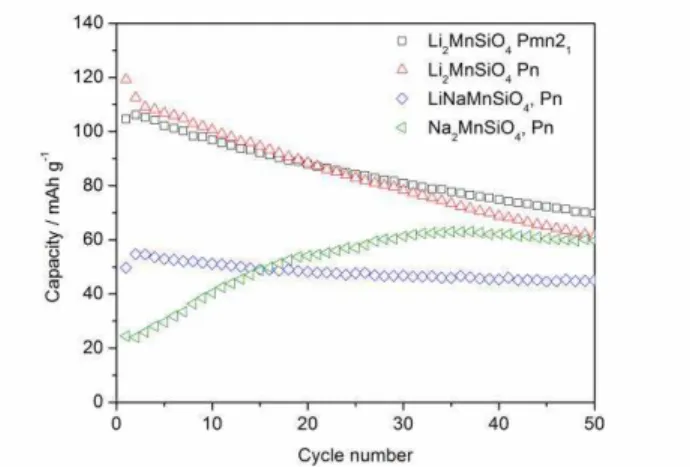Publisher’s version / Version de l'éditeur:
Batteries and Energy Technology (General) - 221st ECS Meeting, 2013-10-22
READ THESE TERMS AND CONDITIONS CAREFULLY BEFORE USING THIS WEBSITE.
https://nrc-publications.canada.ca/eng/copyright
Vous avez des questions? Nous pouvons vous aider. Pour communiquer directement avec un auteur, consultez la première page de la revue dans laquelle son article a été publié afin de trouver ses coordonnées. Si vous n’arrivez pas à les repérer, communiquez avec nous à PublicationsArchive-ArchivesPublications@nrc-cnrc.gc.ca.
Questions? Contact the NRC Publications Archive team at
PublicationsArchive-ArchivesPublications@nrc-cnrc.gc.ca. If you wish to email the authors directly, please see the first page of the publication for their contact information.
NRC Publications Archive
Archives des publications du CNRC
This publication could be one of several versions: author’s original, accepted manuscript or the publisher’s version. / La version de cette publication peut être l’une des suivantes : la version prépublication de l’auteur, la version acceptée du manuscrit ou la version de l’éditeur.
Access and use of this website and the material on it are subject to the Terms and Conditions set forth at
First report of Pn-Li
₂MnSiO₄ synthesized by ion exchange
Duncan, Hugues; Kondamreddy, Abhinay; Mercier, Patrick H. J.; Le Page,
Yvon; Abu-Lebdeh, Yaser; Couillard, Martin; Whitfield, Pamela S.; Davidson,
Isobel J.
https://publications-cnrc.canada.ca/fra/droits
L’accès à ce site Web et l’utilisation de son contenu sont assujettis aux conditions présentées dans le site LISEZ CES CONDITIONS ATTENTIVEMENT AVANT D’UTILISER CE SITE WEB.
NRC Publications Record / Notice d'Archives des publications de CNRC:
https://nrc-publications.canada.ca/eng/view/object/?id=3840bd5e-73cb-44f3-ac92-21c2bdeb9b75 https://publications-cnrc.canada.ca/fra/voir/objet/?id=3840bd5e-73cb-44f3-ac92-21c2bdeb9b75First report of Pn-Li2MnSiO4 synthesized by
ion-exchange
Hugues Duncan, Abhinay Kondamreddy, Patrick H.J. Mercier, Yvon Le Page, Martin Couillard, Pamela S. Whitfield, Yaser Abu-Lebdeh* and Isobel J. Davidson
Institute for Chemical Process and Environmental Technology,
National Research Council Canada
1200 Montreal Road, Ottawa, ON, Canada K1A 0R6
*E-mail: Yaser.Abu-Lebdeh@nrc-cnrc.gc.ca
Since the electrochemical activity of lithium metal silicates was demonstrated by Nyten et al. (1) for Li2FeSiO4, there has been a lot of interest in the silicates
family. The Li2MSiO4 (M = Fe, Mn, Co) family features
a high theoretical capacity of 333 mAh g-1 if the two lithium ions can be extracted. In particular, Li2MnSiO4
has attracted attention due to its higher voltage and the low toxicity of manganese. Due to the low electronic conductivity, ball-milling and carbon coating are necessary to improve the electrochemical performance. However, the capacity fading is also large due to the amorphization of the material beyond the extraction of one lithium, limiting the capacity to 166 mAh g-1(2). To go around this problem, we took advantage of the rich polymorphism of the silicate family to synthesize a new polymorph that could be potentially more stable in the delithiated form than thermodynamic polymorphs (3). In this work, Na+ ions were exchanged from Na2MnSiO4,
which adopts the Pn structure and Li2MnSiO4 and
LiNaMnSiO4 were obtained by controlling the
ion-exchange conditions. Materials were characterized by SEM and TEM and their electrochemical performance were assessed by electrochemical cycling and compared to the thermodynamic polymorph of Li2MnSiO4.
Density-functional theory (DFT) calculations were carried out to determine the lattice parameter, atomic coordinates, lithium extraction voltage and stability of the polymorphs.
Na2MnSiO4 was synthesized from a sol-gel method and
the Na+ ion were exchanged for Li+ by either refluxing with an excess of LiBr in hexanol or hydrothermaly with an excess of LiBr. The electrochemical testing was done in 2325-type coin cells with lithium anode, Celgard separators and 1M LiPF6 in EC:DEC (3:7) between 1.8 V
and an upper voltage between the range of 4.4V to 4.6V. The structure of Pn-Li2MnSiO4 vs. the thermodynamic Pmn21 is shown in Figure 1. The delithiated form of the
Pmn21 polymorph is layered, while the Pn one is a
framework which could indicate better stability. Rietveld analysis of XRD pattern using refined lattice parameter and atomic coordinates fixed at values obtained from DFT calculations were able to confirm that Pn-LiNaMnSiO4
and Pn-Li2MnSiO4 structures were obtained from the
ion-exchange. Coexistence of spherical and needle-shaped particles, deduced by analysis of the XRD pattern, was confirmed by TEM measurements. Electrochemical measurements shown in Figure 2 show that both Pn and
Pmn21 polymorphs of Li2MnSiO4 yield the same capacity
(110 mAh g-1 initially) and both experience capacity fading while Pn-LiNaMnSiO4 yields a lower (50 mAh g
-1
) but stable capacity. Li+ can also be exchanged in-situ by cycling Na2MnSiO4 directly as a cathode material. A
gradual exchange of Na+ ions occurs and the capacity increases from 20 mAh g-1 to 60 mAh g-1. The thermal stability of the polymorphs was investigated by DSC and will also be discussed.
Figure 1. XRD patterns of ZnMn2O4 powders sintered at
400 °C, 600 °C, 800 °C, and 1000 °C.
Figure 2. Discharge capacities of Li2MnSiO4 Pn,
Li2MnSiO4 Pmn21, LiNaMnSiO4 Pn and Na2MnSiO4 Pn.
References
1. A. Nytén, A. Abouimrane, M. Armand, T. Gustafsson and J. O. Thomas, Electrochemistry Communications, 7, 156 (2005).
2. R. Dominko, M. Bele, A. Kokalj, M. Gaberscek and J. Jamnik, Journal of Power Sources, 174, 457 (2007). 3. H. Duncan, A. Kondamreddy, P. H. J. Mercier, Y. Le Page, Y. Abu-Lebdeh, M. Couillard, P. S. Whitfield and I. J. Davidson, Chemistry of Materials (2011), in press.
